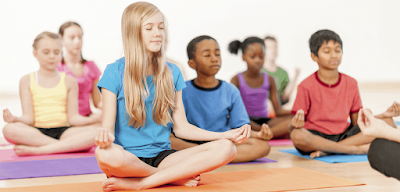Tuesday, 25 July 2017
Patanjali – The onus is on you
Lord Shiva is said to have invented the seven forms of yoga that sage Patanjali assimilated. Today, these seven forms have become the stairway to enlightenment for people around the world.
There are many theories about the origins of yoga, and most of these credit the learned sage Patanjali with creating the yoga asanas and meditation techniques that we practice today. But this is not true – Patanjali did not invent yoga. Yoga was already in existence, and it was propounded by none other than Lord Shiva. However, Patanjali can certainly be credited with giving this early knowledge a definite structure and taking it forward so that the world could learn about it.
Patanjali’s yoga sutras are said to be a direct derivative of the yoga knowledge that the Saptarshis (Seven Sages) preached. The Saptarshis were said to have received their tutelage in yoga from Lord Shiva himself. However, Patanjali took these rudimentary lessons in yoga and backed them with research about their benefits, and how yogic breathing influenced each asana. Patanjali’s yoga sutras also deal with the benefits of a holistic lifestyle, the power of meditation in transforming life and the ways to attain moksha through the practice of yoga.
Yoga in today’s day and age
Though hundreds of types of yoga are practiced all over the world today, they are all derivatives of Patanjali yoga sutras. However, modern yogis have devised their own smaller forms of yoga to suit different needs. Also, not all forms of yoga can suit each practitioner. The trick is to find the form that best resonates with you, so that you can find the physical and emotional fulfilment that you seek.
But whichever form of yoga that you adopt, it must be practiced daily with complete faith and surrender to the universe. It is only when you practice it with a heart full of joy and a mind open to every possibility, that you can begin to find the first glimpses of the ultimate salvation that you seek. Each asana is its own meditation form, and each breathing exercise cleanses your body. The adoption of yoga into your lifestyle can have a tremendous impact on your psyche, transforming your thought processes, changing how your body looks and feels, and also how confident and fulfilled you feel as a human being.
Thus, by transforming you, yoga transforms your relationship with the world. All your love for material possessions and wasteful relationships falls by the wayside when a higher truth enters your life. This is the crux of what Patanjali enumerated centuries ago – the onus is now on you to adopt his teachings and transform your life!
Thursday, 13 July 2017
Yoga for early beginners
Children can benefit immensely
from adopting yoga at a really young age, for both physical and mental
development.
Yoga is
a way of life, and it offers tremendous benefits and zero side effects. The
beauty of it is that anyone can practice yoga, whatever their age, lifestyle,
background or economic status. However, we are conditioned to think that only
adults can perform yoga – studies show that it is good to encourage yoga for
kids, for the following reasons:
- To focus the mind. Children have active imaginations and they are easily distracted. Many children are dreamers and they exist in their own mental space filled with the things that fascinate them. However, early grounding in yoga can help channel their creative and nervous energy in such a way that they are able to concentrate better. Often, many children are unable to focus on one task for long, and they are easily bored or distracted. Yoga for kids eliminates the problem of lack of concentration.
- For physical development. Early lessons in bodily development are crucial for children, and this includes getting adequate exercise and eating healthy food. Many children today choose to play with digital devices instead of being out in the fresh air, and they love to eat junk food that is harmful for their bodies. Yoga for kids helps them develop early fitness and a conscious liking for home cooked, nutritious meals. The asanas help their bodies become stronger and lithe, while meditation and good diet enhance their mental acuity.
- Yoga to increase confidence. Some children are shy and they find it difficult to interact with others. Others feel inferior to their siblings or peers because they feel that they lack the good qualities that others possess. When children are uncomfortable about themselves or they harbour feelings of insecurity, they retreat into a shell. This is harmful for the child’s psyche, because it breeds fearfulness, lack of trust and reduced confidence. An under confident child will often grow into an under confident adult – so yoga must be taught early to inspire the child and increase their confidence in themselves.
- Yoga to increase discipline. Many children today are left to the care of babysitters or relatives since both parents go to work. In the absence of a parental figure, many children become stubborn, spoilt and wilful. They are not disciplined properly and become headstrong and obstinate. Soon, there are many behavioural and development problems that peers and teachers may bring to the parents’ notice. At this stage, instead of punishment and detention, the child should be enrolled in a yoga class so that their mind is calmer, they learn the value of learning and discipline and how to be a credit to society.
Subscribe to:
Posts (Atom)

